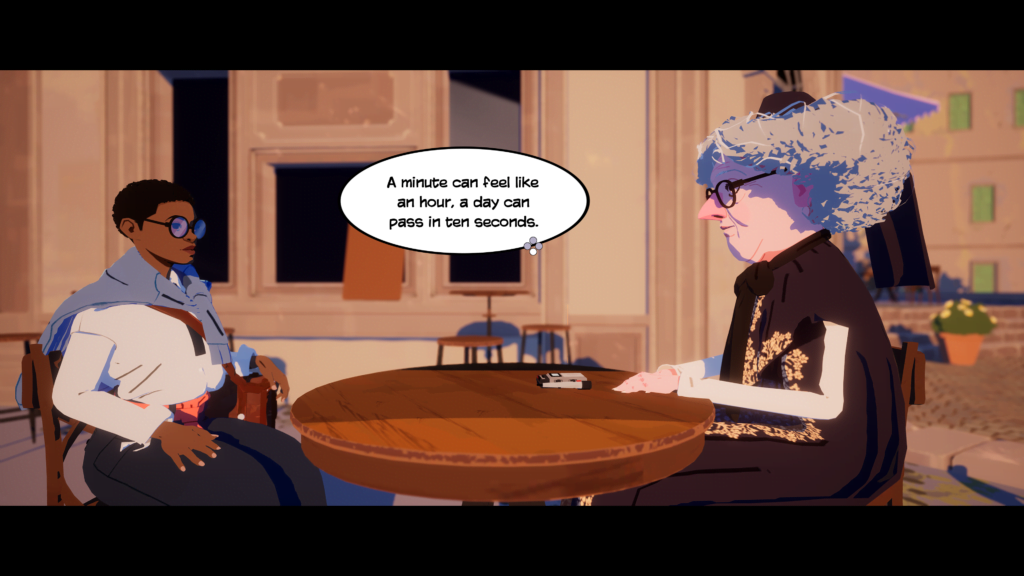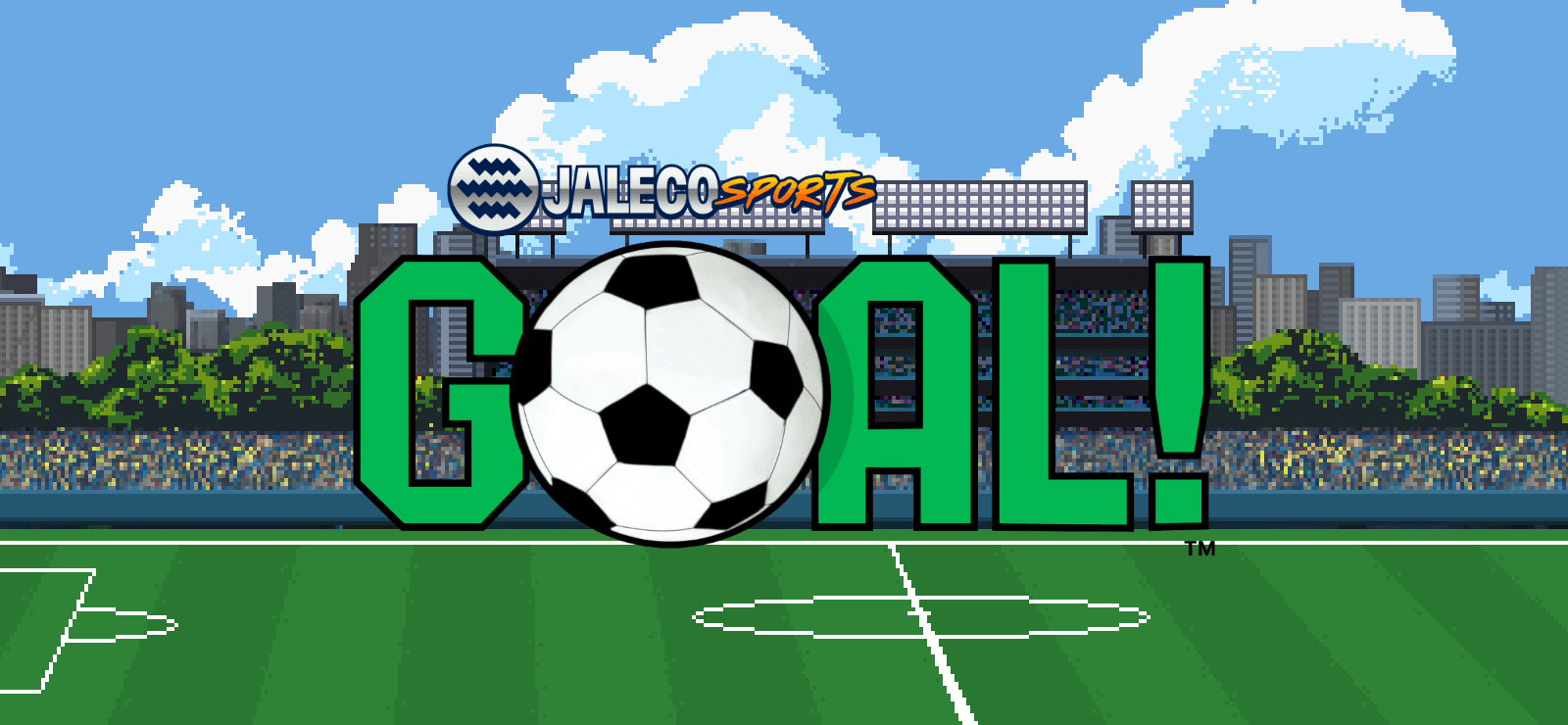What do you do when faced with the end of the world as you know it? Not in a literal apocalyptic sense, mind, but a more figurative sense: an end of an era, of a particular way of life; an end to everything we’ve seemingly ever known to make way for what’s next.
SEASON: A letter to the future follows Estelle, a young woman who, upon learning the current season is coming to an end, sets off to chronicle everything she can about the world as it stands. The sights, the sounds, the people, the culture: anything and everything must be captured. Equipped with a camera, a recorder, and a notebook, she documents as much as she can to create a snapshot of what the season was right before the end, a snapshot she hopes to deliver to an archive that stands forever untouched by the changing of seasons, where her work will remain safe for future generations.
Estelle and the people of her village live in isolation from the rest of the world. Their village was founded by a doctor who’d found a cure to memory sickness – ailments of the mind that manifest from memory excess, time misperception disorder, and more. The people there have been careful to cultivate a space where such afflictions are kept at bay. When Estelle announces her intent to leave, she’s not able to go without first making a ward to protect herself: a pendent infused with the memories of someone close (in Estelle’s case, her mother). The process of making one of these pendants involves taking objects that have meaning and burning them, capturing their essence. A paper crane made by a good friend years ago, a fossilized shell of an insect, flowers picked by Estelle’s father who passed away: objects both mundane and special, each one carrying strong memories with them.

The pendant is important because memory is a tangible force in SEASON. Crystals called harpik are able to capture memories, a mineral mined from the earth itself. A mineral rife with potential use but many risks given its possible effects on the mind. In the Tieng Valley, there are “memory flowers” that record moments from passersby – a brief conversation between soldiers during the war, a family dealing with car troubles – playing them back to be heard by any who would listen. Signage around the valley states that the flowers are safe when few in number, but dangerous in large quantities, a potential vector for contracting memory sickness without a ward.
There’s a moment where you see the pendant’s power in action. Deep in the Tieng Valley, a massive gathering of harpik spreads out around a shrine. The crystals cry out with a cacophony of voices all speaking at once, overlapping in a loud, jumbled mess. It’s a striking moment. That these crystals surround a shrine dedicated to a deity who can remove memories upon request is likely no coincidence.
Seasons in this world mark different eras in history. The previous season was one of a ten year war. The one before that was the golden season, marked by a boom in the arts and exchange of culture. And before that, the season of modernity, which marked the beginning of industrialization, and so on. The world’s history is unknown before a certain point (in that it’s not archived as distinct seasons), but the world itself still bears the scars of what came before. Each step of Estelle’s journey shows the march of history and how much things have changed. Not far from outside her home village the wreckage of massive cranes and other heavy machinery can be seen. The ruins of a postal outpost stand on a hill overlooking the wreckage, unset letters and postcards still waiting to reach their destination, their contents a window into a different time.

SEASON is a game deeply interested in history and how it’s formed. Estelle is not an objective observer. She may be new to the land outside her home, but her accounts of what she sees and experiences remain personal. While history traditionally takes a more detached approach to recounting the events of the world, SEASON knows that you cannot separate yourself from it. Estelle is living the final moments of the season – seeing the wider world for the first time right on the precipice of change. That perspective is important and informs everything. She’s not going on a sightseeing tour during the height of the season, nor are the people she meets living their everyday lives anymore. Everyone and everything is in a transitory period. Lives are being uprooted, homes are being abandoned, entire landscapes wiped away. What were those final moments like? What were people concerned with, how did they handle the coming end of the season? What lessons, if any, can be taken into the next season?
History is always formed from personal accounts. It’s not until later that a narrative – an agreed upon “truth” – begins to form. Estelle’s job as documentarian then is one that places you in the role of creating the basis of that process. What do you want to say about each place you visit? What are the takeaways, the parts that are most important? Every location Estelle visits is given a couple pages of space in her notebook. What’s placed in them – photos, recordings, physical objects, or musings and observations – are your decision. SEASON does not dictate what each page needs. The only requirement is that something be placed in each one.
I’m not usually one for more visual creative pursuits. I don’t have an eye for design. Ask me to draw something and I’ll start looking for the nearest exit. Even decorating my laptop with stickers had me second guessing where to put each one the entire time. Credit to SEASON then that I enjoyed and actively wanted to fill each page to my liking. Which photos I use and how they’re framed, where I place them; finding the right spot for Estelle’s drawings or musings, pairing text with the right visual or just choosing a sentence that spoke to me. I would take countless photos and record any noise I heard and examine anything I found. Even if only a sliver of what I gathered made it onto the page, I wanted a record of everything I saw all the same.

Looking back over the journal right at the end, flipping through its pages and remembering every leg of the journey, was unexpectedly emotional. It hadn’t been that long since I’d seen those spaces, but retracing each step, recalling the choices I’d made with arranging each page, moved me. It had been just long enough that I didn’t remember what I did for some pages — how busy and messy some of the early entries were. It was like I read them for the first time. SEASON does let you make any final edits during this time, but the moment felt more powerful as one of reflection than a final edit pass. I’d done enough tinkering with each page as I moved through each area. To make any changes now, I felt, would remove their “of the moment” quality.
There are things I probably could have done to make the presentation a bit cleaner or fit more in. But if this is to be a snapshot of a particular moment in time, it feels appropriate that it not be refined or “perfect.” There’s no satisfactory way to capture something so monumental. All you can do is take what you have and hope it’s enough.
It’s hard to talk about SEASON without acknowledging the conditions of its development. Not long after its unveiling in 2020, Rebekah Valentine, writing for GamesIndustry.biz, broke the story of a toxic work culture at Scavenger Studios and regular harassment being perpetrated by co-founder Simon Darveau.
Following the GamesIndustry.biz report, Darveau was placed on suspension and CEO and co-founder Amelie Lamarche stepped down temporarily while an investigation was conducted by a third-party. The results of said investigation lead to both being reinstated: Lamarche resuming her role as CEO and Darveau taking a smaller role as part of a “conditional reinstatement.”
How much this ultimately has made the studio culture better, whether it’s a just resolution for those still working there is hard to say. No new reports have surfaced regarding the studio since, and I’m reluctant to take a statement that actions are being taken without hearing from the workers directly. It’d be irresponsible not to acknowledge what happened, though.





